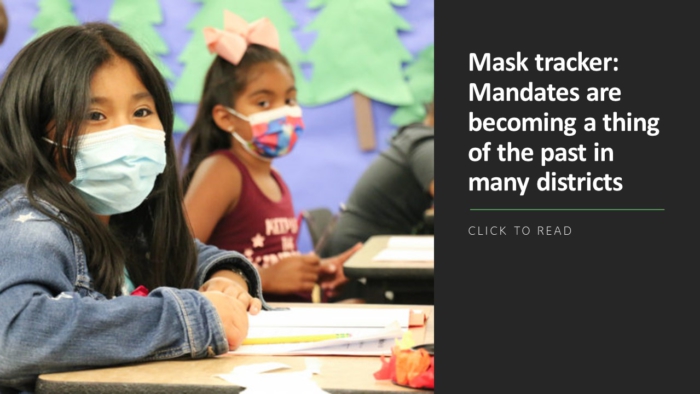Disclaimer #1: This story does not offer financial advice on how to invest your COVID relief money. While you may get a few ideas as a matter of course, the goal here is to help you (the school leaders) tell compelling stories about how you are spending American Rescue Plan funds to bring your schools, students and staff back from the pandemic.
Disclaimer #2: These aren’t exactly our ideas. We are borrowing them, with permission, from the new “Investment in Action: Telling the Story of How Federal Pandemic Recovery Funds Are Supporting Students,” a guidebook created by Chiefs for Change, the bipartisan network of state and district education chiefs.
Accelerating learning, supporting student health and wellbeing, and retaining and recruiting staff are among districts’ top spending priorities. In their efforts to be as transparent as possible, the organization’s members have, among other steps, created dashboards and tech tools to share spending information with their stakeholders. They have also spread the word at community meetings and on social media.
“As education leaders, we have a once-in-a-lifetime opportunity to make investments that will help our schools address their most pressing local needs and priorities, and design programs that better serve students now and over the long term,” said Mississippi State Superintendent Carey Wright, a Chiefs for Change board member “With all the challenges systems are facing, this funding can make a real difference. It is critical for us to tell the stories of progress and impact.”
First of all, it’s vital to explain the why behind your spending decisions—i.e., what problems you are solving. Also, you should be clear about why you think a certain program will work and then follow up with evidence of its short- and long-term impacts. You should also detail how the funding allows you to partner with community organizations to better serve students.
Here’s a look at how districts are telling their stories:
1. Highline Public Schools: Leaders in this district north of Seattle produced videos and social media posts to describe their ESSER strategy. Using the hashtag #ARPStars, Superintendent Susan Enfield created a short video to detail how Highline is accelerating learning, supporting students’ wellbeing and engaging with families outside the classroom.
The American Rescue Plan funds have been critical during the pandemic to ensure we deliver on Our Promise to know every student by name, strength & need so they graduate prepared for the future they choose. Thank you @SecCardona for highlighting this work. https://t.co/0A0LFRLnge
— Highline Schools (@HighlineSchools) February 4, 2022
In her explaining “the why,” Enfield described the expansion of in-person and virtual counseling, big investments in curriculum design, and new opportunities for families to engage with teachers.
2. Indianapolis Public Schools: The district built an online, “ESSER tracker” dashboard to share up-to-date information about how relief funds are being allocated and spent on key priorities and initiatives. The tracker is updated on a quarterly basis, detailing district spending on four priorities: improving technology, enhancing student safety and school facilities, and promoting learning acceleration.
3. Boulder Valley School District: A live feedback model allowed leaders in the Colorado district to collect feedback and communicate results via an online forum focused on the 2021-22 budget. In the forum, the visual “card” created for individual funding proposals allowed community members to provide input through a visually appealing and straightforward platform. District personnel could also share the rationale behind their plans.
More from DA: Principals detail 2 powerful solutions to surge in behavior problems
4. District of Columbia Public Schools: Results of a major community survey on the use of federal relief funds were shared on the district’s website in an effort to highlight community priorities. Community members and stakeholders were able to rank potential investments by the potential impact on pandemic recovery and school reopening efforts. District leaders detailed how the survey guided some $20.8 million in allocations.
5. Houston ISD: Superintendent Millard House II wrote an op-ed for the Houston Chronicle encouraging parents to send their children to school. He detailed how ESSER funds were being spent on school safety policies and on new investments in in-person instruction. He also explained why he was sending his own two young children to school. He also discussed how the district was working to reverse a teacher shortage by deploying 250 staff members with teaching certifications into classrooms.
6. Tulsa Public Schools: The Oklahoma district launched a communications campaign, highlighting ESSER priorities such as tutoring, one-on-one support for graduating seniors, summer enrichment, and expanded access to out-of-school activities. Messages were crafted to resonate with different audiences via social media, email, text messages, and old-fashion snail mall.



